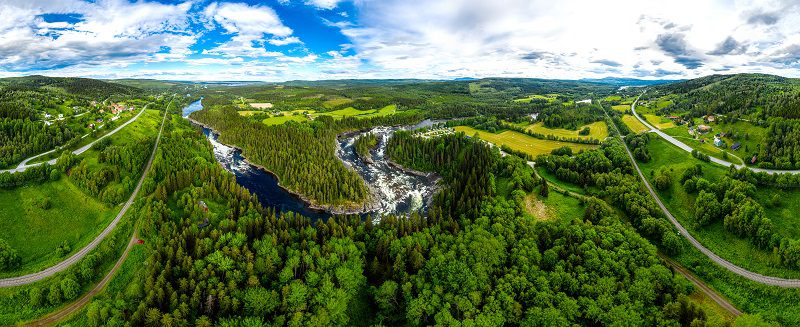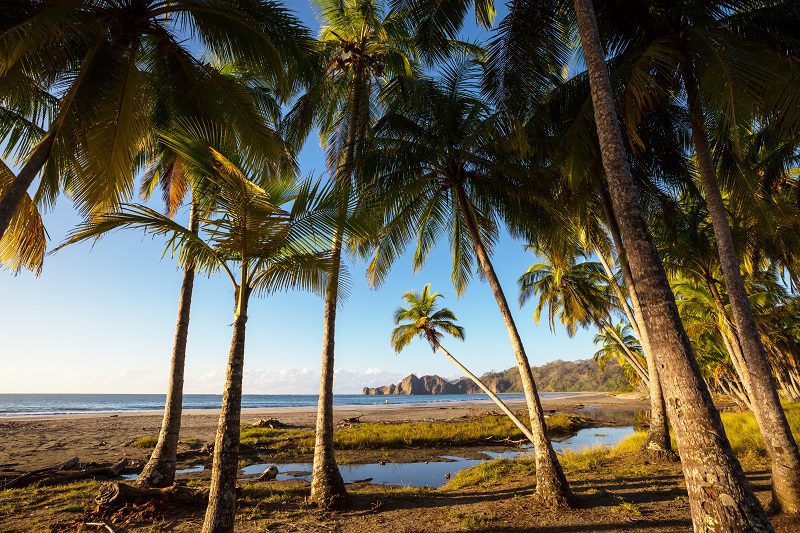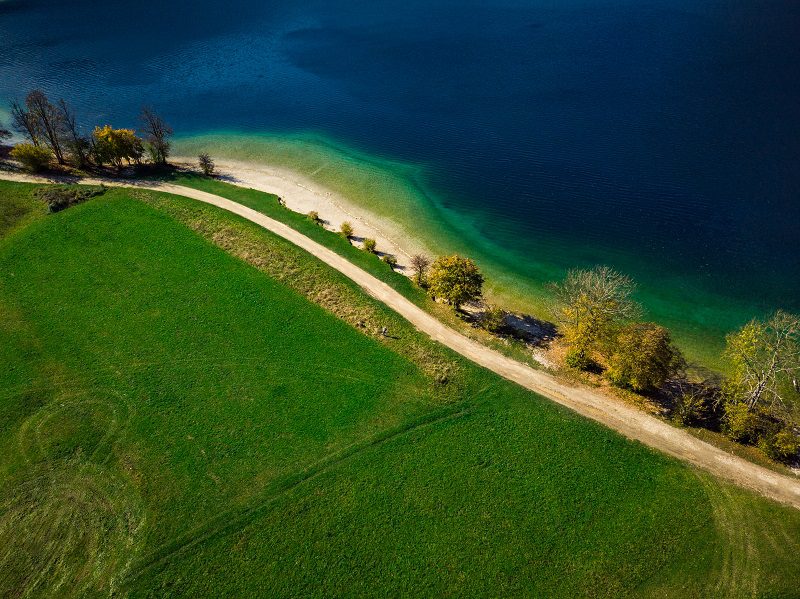
These environmentally friendly nations are going that extra mile to save the planet Earth. We could say that they are the world’s true superheroes. The thing is, the world is in trouble, and that only means that we’re in trouble as well. From plastic choking our oceans, greenhouse gases warming our planet, to air pollution poisoning our every breath, and the list goes on.
According to the United Nations’ Intergovernmental Panel on Climate Change, we need to cut back on greenhouse gas emissions, deforestation, plastic use, and many other issues, if we want our planet to survive and thrive. The World Health Organization (WHO) also reminds us just how dangerous our lack of efforts can be: Up to 7 million premature deaths around the world are linked to air pollution every year.
It is true that one’s best efforts to help the environment by driving a fuel-efficient car or cutting back on plastic can be small and meaningless, especially when massive nations do little to reduce the pollution of the air and waterways.
However, the good news is that there are countries that are demonstrating their commitment to the environment by adopting policies to curb emissions, reduce waste, and encourage greener living.
Here are the 10 countries doing their best to protect the environment!

Sweden
According to TheTravel.com, the pristine Scandinavian country is “consistently among the most progressive countries in terms of care for the environment.”
This is because “the Swedish government’s waste management policies have led to just 1 percent of solid waste in landfills and 99 percent of it is recycled or made into biogas.”
Moreover, Sweden has one of the lowest emissions rates in all of Europe, and it has decreased by nearly 20 percent since 1990. This country has a national responsibility to keep up with these positive measures, with big and small companies finding ways in which to be more environmentally responsible and progressive.

Denmark
A few decades ago, there were three and a half automobiles for every bicycle in Denmark’s capital city, but since 2016, bikes have overtaken cars, according to The Guardian.
Morten Kabell, Copenhagen’s former mayor of technical and environmental affairs, said in 2016 that he was “striving for 50 percent of all commutes to be made by bike by 2025—not such a lofty goal, given that the current figure is 41 percent.”
Nevertheless, he admitted that the new metro extension, which opened in 2019, could inhibit those plans, but he still believes that any measures taken towards green living were a move made in the right direction.
“The important thing for me is to have a green transport system [that’s] fossil-free and alleviates congestion and air pollution,” he added.
The current mayor, Ninna Hedeager Olsen, is continuing to work on green policies, remarking that her country “cannot be complacent and must keep working towards their goal of getting the cars out of the inner city, making room for bikes and peaceful areas with nature.”

Norway
Norway’s Scandinavian friend Denmark is letting go of the traditional automotive transport for bipeds, but in Oslo and elsewhere, the measure is taken for electric vehicles to help the country become more environmentally friendly. And apparently, it’s working just fine.
According to the Los Angeles Times, “as of 2017, electric cars and plug-in hybrids accounted for half of the new cars sold in the country. And in March of ’19, electric cars alone made up almost 60 percent of new car sales. By 2025, the Norwegian government wants that number to be 100 percent.”

Costa Rica
While a tiny nation like Costa Rica is compared to most of the others on this list, this country does an amazing job in protecting the environment, and it is leading the way in increasing forest cover, doubling its tropical rainforests over the past few decades, according to the World Economic Forum, and transitioning to clean energy.
“Over the last four years, Costa Rica has generated more than 95 percent of its domestic electricity from renewable energy,” according to Reuters. “In 2018, nearly three-quarters came from hydropower.”

Belgium
Belgium has its air pollution in its bigger cities like any other country, but as you drive around this country, you won’t see a landscape dotted with landfills. This is because “an impressive 75 percent of Belgium’s waste is either recycled, reused, or composted,” per TheTravel.com.
Belgium is also leading the global transition towards a circular economy, so there’s less waste, to begin with, “where products and materials continue in the system for as long as possible” instead of being trashed after a single-use, according to the UN Environment Programme.
Nevertheless, all nations should become more environmentally friendly, starting with making an impact in our own backyards, too.

Singapore
The environment isn’t a new concern for Singapore, because, in 2008, it was instructed that all the new buildings must be built green, according to National Geographic. And just recently, according to USA Today, “the Southeast Asian nation declared 2018 the Year of Climate Action, alerting the public to the dangers of climate change, increased regulations on discarding food, plastics, and e-waste; and turning a greater focus on sustainability.”
Additionally, Singapore incinerates its trash to reduce landfill usage, however, the problem with plastic is still there, but their purpose is to become a “zero waste” nation. The National
Environment Agency (NEA) expresses that the nation is even “offering research grants for companies and organizations to develop sustainable waste management technologies, and planned to make it mandatory for large generators of packaging waste to report the types and quantities they use and their reduction plans by 2021.”

New Zealand
The crystal-clear skies of New Zealand that we see in many popular movies like Lord of the Rings are 100 percent real, according to USA Today. The crystal-clear skies are possible because zero percent of the population is exposed to unsafe fine-particle air pollution levels. You heard right—zero percent.
The air above New Zealand is one of the cleanest on the inhabited planet, due mostly to a commitment to clean energy. “The grid here is incredibly ‘green’—a huge proportion (81 percent) of NZ’s electricity is generated from renewable resources,” notes a 2019 article in Forbes.
“Additionally, almost one-third of the terrestrial and marine area is protected, the highest share among the top 15 countries doing the most to protect the environment.”
That same Forbes article, however, sees a shadow in the future for New Zealand, because of an increase in the recent years for the number of vehicles that use fossil oil, and there is also an over-reliance on agriculture. Furthermore, only time will tell if this beautiful country will continue to have pristine air and clean water.

United Kingdom
The political climate in the U.K. has been unstable for the longest time. But “despite the considerable chaos, its climate ambitions have not wavered. In fact, in 2019 the country passed a measure requiring its emissions to reach net-zero by 2050—making it the first nation with a legally binding commitment to do so,” according to the Los Angeles Times.
The story goes on to quote Niklas Hoehne, a partner at the New Climate Institute, who said, “There is an end to fossil fuels in the U.K. and everybody can now plan with this vision.”
The Guardian explains what changes need to be done to achieve this: a ban of new petrol and diesel cars by 2030, quadrupling clean electricity production from wind and solar, cutting beef and dairy consumption in conjunction with a move toward more plant-based diets, and the planting of 1.5 billion trees, among other ambitious efforts.

Finland
The WHO claims that Finland has the world’s best air quality, and according to The Telegraph, Helsinki is one of the cleanest capital cities on Earth. This is mostly due to it being a “post-car city,” with “2,400 odd miles of cycle lanes,” and a measure to make automobile ownership outdated by 2025.
Their clever and personalized public transportation system also helps remove the need to go to work with personal automobiles. Finnish people “can digitally summon Kutsuplus minibusses to any of more than 1,000 local bus stops, using a smartphone or computer to indicate the location and desired destination,” and like Uber pool, the buses may pick up and drop off others efficiently based on driving routes.

Slovenia
National Geographic has heaped praise on this Adriatic nation for being “the world’s most sustainable country.” This award acknowledges Slovenia for having achieved “an eye-opening 96 out of 100 detailed sustainability indicators (think environment and climate, culture and authenticity, and nature and biodiversity, among others), and its capital city, Ljubljana, “was deemed to be Europe’s Greenest Capital in 2016 by the European Union.”
The UN reports that Slovenia achieved its sustainability mostly with the help of a 2015 program to make the transition to a green economy with incorporating sustainable farming practices and green financial reforms. This program generated environmentally friendly technology and motivated businesses to gravitate towards a low-carbon future.

Switzerland
According to the latest report from the Environmental Performance Index (EPI), Switzerland leads the world in sustainability. The neutral European nation received “almost perfect scores for water sanitation and water resources, and placed second overall for air pollution as well as climate and energy.”
The Swiss reached this level by focusing on urban planning and natural-land conversion through a Spatial Strategy for efficiently using precious resources. Renewable energy is a priority for this country, as well as a carbon tax to limit air pollution, according to the House of Switzerland.

Estonia
“Estonia was one of the first European Union countries to reach the goal of renewable sources of energy by 2020 and also to pass it more than eight years ahead of schedule,” according to Ecobnb.com.
Furthermore, it’s easy to navigate in the country, thanks to its trams and buses, which play an important role in helping to reduce carbon emissions. But the environmental friendliness isn’t confined to the green spaces of Estonian forests. It’s incredible that the capital city of Tallinn became the first European city to provide free public transports to the citizens after a referendum in order to reduce air and noise pollution.























